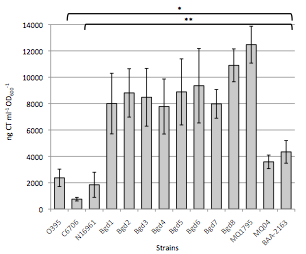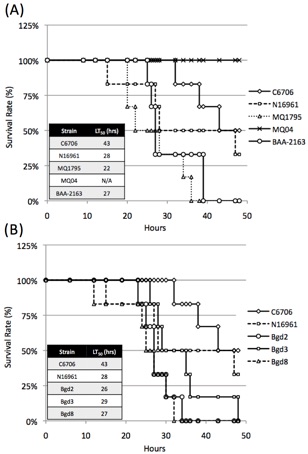Vibrio cholerae
Vibrio cholerae is an aquatic Gram negative bacterium and the etiological agent of the watery diarrheal disease cholera. This bacterium produces a plethora of virulence factors that allows it to colonize and cause infection in the human intestinal tract. Two main virulence factors are the cholera toxin (CT) and the toxin co-regulated pilus (TCP). During infection these two virulence factors, CT and TCP, are regulated by a master regulatory protein called ToxT (see figure above). An infected individual will develop the hallmark symptoms of severe watery diarrhea (also known as rice water stool) and vomiting. If the disease is not treated immediately or not treated properly, the infected individual will succumb to the disease and will eventually die as a result of severe dehydration.
About Me

Cholera toxin (CT) and toxin co-regulated pilus (TCP) regulation in Vibrio cholerae.

Our research is focused on relatively new emerging variants of a wild-type strain of V. cholerae known as El Tor variants. El Tor variant strains have been isolated not only from patients where cholera is endemic, such as in Bangladesh and Mozambique, but also more recently from patients in Haiti, where cholera has been recently re-introduced after the last case was reported over 100 years ago. These El Tor variants have been shown to be more virulent than the wild-type predecessor, causing more severe symptoms of the disease at a much faster rate than previously observed in patients.
The exact mechanism for the increased virulence observed with these El Tor variants has yet to be determined and is the primary focus of our research program. Whole genome analysis of El Tor variants isolated from patients by next generation sequencing, has revealed unique point mutations across the genomes analyzed, which not only sheds some light onto potential mechanisms responsible for the increased virulence observed, but also raises more questions to address.
In our lab, we employ various molecular and microbial techniques in order to decipher this problem of increased virulence in El Tor variants, as well as to address other questions aimed at characterizing the TCP biogenesis apparatus.
Cholera toxin (CT) production in wild-type Vibrio cholerae strains, ten clinical isolates and a representative strain from the Haitian outbreak (BAA-2163).
LT50 of representative Vibrio cholerae clinical isolates from Bangladesh (MQ1795, MQ04, Bgd2, Bgd3 and Bgd8), Haiti (BAA-2163), compared to wild-type strains (C6706 and N16961).




Current Funding
New Hampshire IDeA Network for Biomedical Research Excellence (NH-INBRE) (2015-2018)
NIH Grant # P20GM103506 (National Institute of General Medical Sciences)
Previous Funding
PSU Research Advisory Council Grant (RAC) (2015-2016)
New Hampshire IDeA Network for Biomedical Research Excellence (NH-INBRE) (2013-2015)
NIH Grant # P20GM103506 (National Institute of General Medical Sciences)
PSU Research Advisory Council Grant (RAC) (2013-2014)
Department of Microbiology
Plymouth, NH 03264
Boyd Science Center - Room 215
Phone: 603-535-3199

We have also recently ventured into the not-so-deep, as we investigate the relationship between Vibrio cholerae and marine crustacean copepods. The role of Vibrios in shellfish-related food poisoning is a great concern, particularly here in the Granite State, as local farmers raise and sell oysters from Great Bay. Although infectious Vibrio cholerae is not found in these waters, other Vibrio species are present. We hope to positively contribute to reducing Vibrio associated disease from eating contaminated shellfish harvested out of Great Bay, by examining Vibrio cholerae and its role in copepod attachment, and translating that information to the more relevant other Vibrio species and oysters.
Motivated students interested in either of these projects or aspects within, or with interests in other bacterial pathogens and microbiology, are encouraged to contact me to set up an undergraduate research experience.